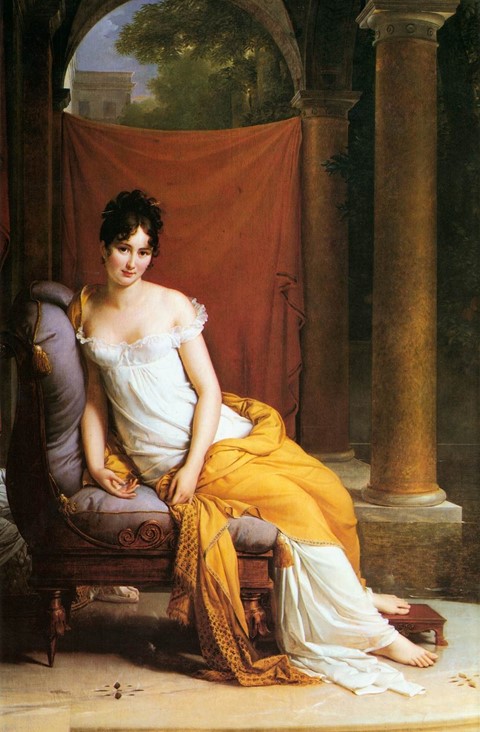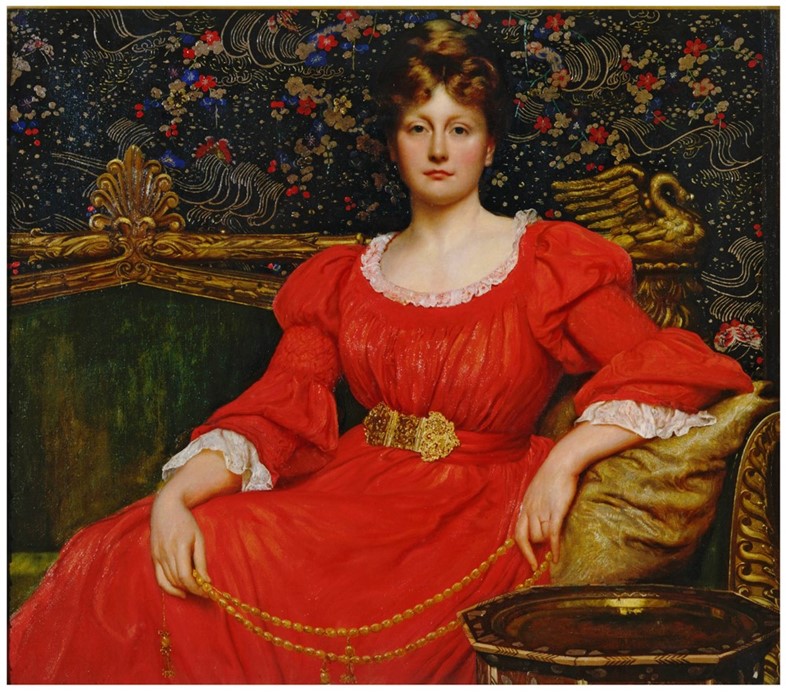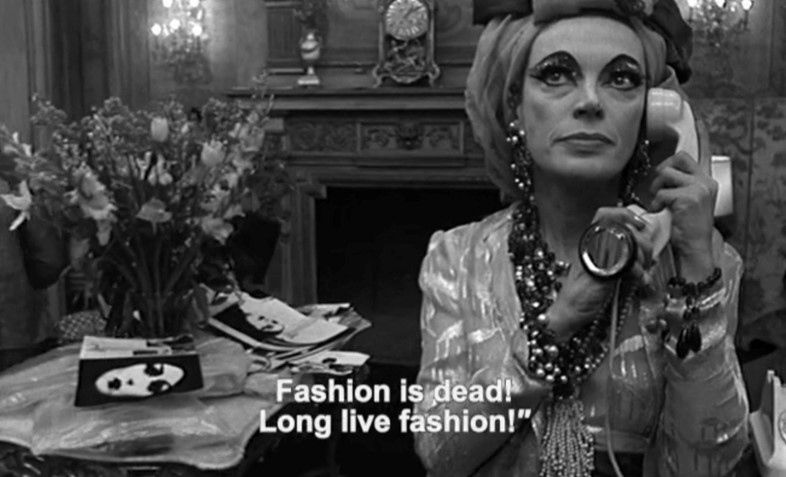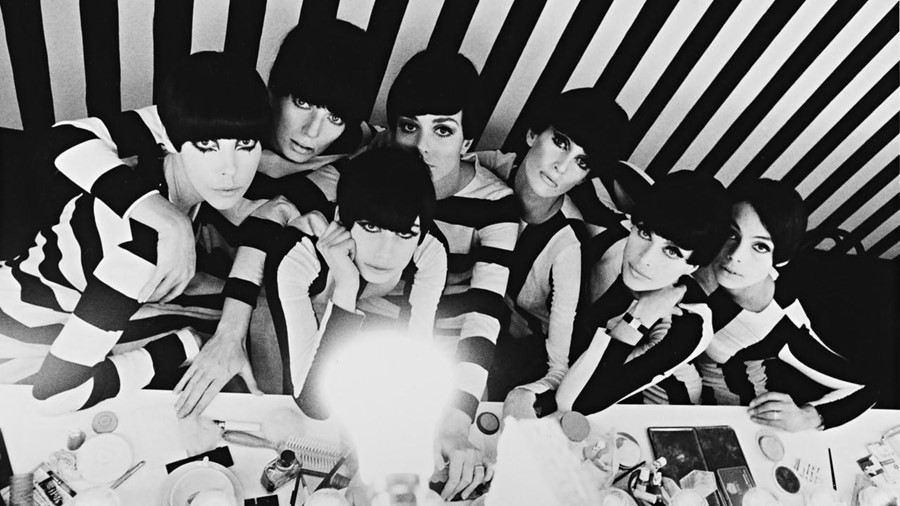From the Enlightenment to Bloomsbury, Regency style to Oscar Wilde, we reflect on the cultural figuration of beauty over recent centuries
The word “beauty” is often found hovering somewhere over discussions about contemporary fashion, even if it goes unmentioned. Beauty, in fashion terms, was once a certain thing: critics were confident of what they meant when they uttered the word and designers knew it was something they wanted to achieve. But beauty’s stake in the arts and humanities has been in a kind of free-fall for at least the past 60 years, and has only fallen into further disarray in recent decades. Today, our relationship to both the word and the concept has become somewhat confusing. An uncomfortable reminder of suppressive ideals and traditional values, artists and designers frequently rail against it, and both anti-fashion and “counter-beauty” art seek to escape ideals but often all that results is that a new standard of beauty is exchanged for an old one. And, if the more subversive side of fashion makes an effort to escape the status quo of beauty, when it comes to the majority of fashion advertising and design it is unavoidable. Here, from Kantian values to postmodern dissidence, we reflect on the evolution of beauty as a concept throughout history.

“Pure” Beauty
Enlightenment Europe was marked by a rigorous interrogation of the nature of beauty. While theirs was by no means the first attempt to define the beautiful, it was undoubtedly the first epoch where this preoccupation dominated cultural life to such an extent. In 1757, Edmund Burke published his treatise, A Philosophical Enquiry into the Origin of Our Ideas of the Sublime and Beautiful, which was considered one of the first comprehensive studies of beauty, alongside works by Kant and Baumgarten, who similarly wanted once and for all to understand the vague and puzzling phenomenon of beauty. A large part of their curiosity lay in discovering what differentiated beauty from other aesthetic qualities such as the sublime. These ideas were, to a large extent, reworkings of ancient Greek and Roman concepts. The theories about beauty which resulted from the Enlightenment scholars’ classical fixation held sway over artists and designers in the later half of the century: as critics praised classical architecture and Europe became striped with a multitude of neoclassical columns, artists took up themes from Greek and Roman mythology as well as attempting to emulate the formal composition of antiquity.
Fashion did not escape this influence: a profusion of drapery and robing emerged in a world of restrictive and severely uncomfortable Rococo clothing. Women sought to evoke the appearance of Athena statues: animated sculptures, marble goddesses come to life. Of particular appeal was the manner in which sculpted marble rendered the illusion of fine fabric hanging from the body. This was most evident in the Greco-Roman inspired Directoire gown, which became the height of Empire and Regency taste and was associated with figures of the Revolution such as Madame Tallien, who heralded this style.
Also worth noting is the abundance of white. Art historian Winckelmann was particularly smitten with it, envisaging the world of antiquity as one of pale and luminous slabs of marble (despite the fact that much of this marble would have been painted in vivid colours). It became the hue of refinement and culture, of both aesthetic and moral purity, and was later seen as the natural choice for Neoclassical fashions such as the aforementioned Directoire dress.

The Cult of Beauty
While the investigation into the beautiful reached its peak with Neoclassicism, it is during the fin de siècle that an adoration of beauty can be said to have come into its own: no longer something to be merely understood or even appreciated, but something to be unreservedly worshipped. Perhaps most influential within this movement was the art critic Walter Pater. Following the publication of his musings on art and beauty in 1868, nothing short of an eruption ensued. It was a call for the utmost veneration of beauty, and “the love of art for its own sake”. This call was embraced by some rather more than even Pater anticipated, inspiring a discipleship of aesthetes who were known to sing and scream lines of his work from the rooftops of Oxford and London. One of Pater’s most famed disciples was Oscar Wilde who, alongside the pleasure-seeking coteries and purveyors of high-brow taste that sprung up, treated sartorial matters with the utmost importance. Velvet jackets, silk and brocade became the costume of the movement and a highly ornamental backdrop was there to set it off: salons and parlours became crammed with decorative patterns, ornamental delicacies, ornate bibelots and floral profusions. Where Neoclassicism’s tenets of “form over content” and “art for art’s sake” gave way to a simplicity of appearance, a love of visual excess became a pronounced feature of Aestheticism and the “Decadence” which followed.
This difference was too much for many and the movement soon became associated with moral depravity and an unwelcomed hedonism. This backlash of masculine Victorian morality exploded with the infamous trial which was to leave its mark throughout the European empires. This much-publicized condemnation of Wilde, who was fixed in the public mind as a beauty-loving aesthete, ultimately left many scared to express overt passion for anything to do with the movement.

That is not to say, however, that the beauty fixation had completely extinguished. Many of the same tastes were still prominent during the interwar period with the likes of the Bloomsbury Group and other modernist figures whose formalistic tendencies overlapped with Aestheticism. A concern for the decorative arts remained prominent, as exemplified by the Omega Workshop, a design studio founded by Bloomsbury Group members Vanessa Bell, Duncan Grant and Roger Fry which produced various works, including fashion, though the style was somewhat removed from Victorian Aestheticism – and the more archetypal aesthete was apparently not yet extinct either. Socialite and artist Stephen Tennant wrote his Word of Counsel for Today’s Lady for a 1928 edition of Vogue: “Far better to look like the dullest Chanel Mannequin than the intense beauty-loving Englishwoman whose wardrobe consists on bernouses, saris, mandarin coats, antique velvets, painted wooden beads, huge dull silver plaques, and so forth.” He continues: “lines severe and colourings cool! Have a sleek neat head, and austere street coats! In the evening let your dress be luxuriously simple and your wrap luxuriously complicated! With diamond bracelets from wrist to elbow, an expression of vacuous boredom on your face, and the steel of your heart tempered for conquest – life ought to be fun oughtn’t it?”
Every bit the “beauty-loving” aesthete himself, we see in Tennant’s piece that the aesthete of former decades was still very much alive in the Englishwoman he describes; but we also see that even amongst beauty-lovers like himself the old trends were starting to grate.

Beautiful and Damned?
Following WWII, the general reception to the idea of beauty changed significantly. Many artists, writers and designers balked at the notion of beauty-worship after the violence of the war and felt their work ought to reflect this. Beauty’s reputation as a valuable artistic quality rapidly declined. Once the aim of art, it was now viewed as a distracting element which was superficial, cosmetic and frothy. Avant-garde fashion which emerged sought to denounce beauty, or, more to the point, the old ideals of beauty that they found so suffocating. New sources were looked to for inspiration in machines and new materials, as parodied by William Klein in the fashion show scene of Que êtes-vous, Polly Maggoo?
It has been noted that even the word “beauty” in recent years has accumulated a certain taboo and critics are more likely to refer to a work as “interesting”, even if what they really mean is beautiful. The result is the production of art and fashion in which beauty is smuggled into the work under the aegis of politics, which is ultimately harmful to art and design of a fundamentally radical nature. Contemporary fashion on a more commercial scale still follows the prototypes laid out by earlier conceptions of the beautiful, conceptions which were in many respects problematic centuries ago and have only become more problematic today. That is not to say the pursuit of beauty cannot be subversive. From Grace Wales Bonner to Rick Owen and Gareth Pugh, contemporary fashion and “anti-fashion” continues to challenge beauty standards and dissemble established notions of taste; but does this inevitably mean establishing new ones?
